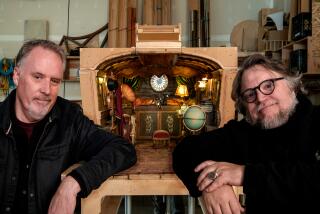Perspective on 3-D
- Share via
I agree with much of what Charles Solomon said in his commentary on the state of computer animation (“Working the Bugs Out,” Nov. 27). But as a film industry artist who has used both traditional and digital means, I would submit that a good number of his perceptions have little to do with what computers are capable of (by themselves, nothing; in the right hands, almost anything) and are colored by a high degree of familiarity with the former.
Traditional animation has built up an enormous level of perceptual equity with the public. It has a large “vocabulary of line” that immediately speaks to those of us who have grown up with and cherished it--and also leaves much to the imagination.
Three-D animation can supply much more information to the eye--and may leave some viewers unsatisfied when that information (texture, accurate shadows on surfaces) does not match what they previously only imagined. The best of 3-D computer animation often borrows heavily from that vocabulary, which was borrowed in part from even older performance arts. “A Bug’s Life” is a terrific example.
The younger and less experienced crop of animators who practice 3-D will find their own vocabulary and styles--I hope not too far from what we know and love--and our children will grow up remembering Buzz Lightyear and Flik with as much affection as Solomon and I have for Jiminy Cricket.
PETER MITCHELL RUBIN
Los Angeles
More to Read
The biggest entertainment stories
Get our big stories about Hollywood, film, television, music, arts, culture and more right in your inbox as soon as they publish.
You may occasionally receive promotional content from the Los Angeles Times.










